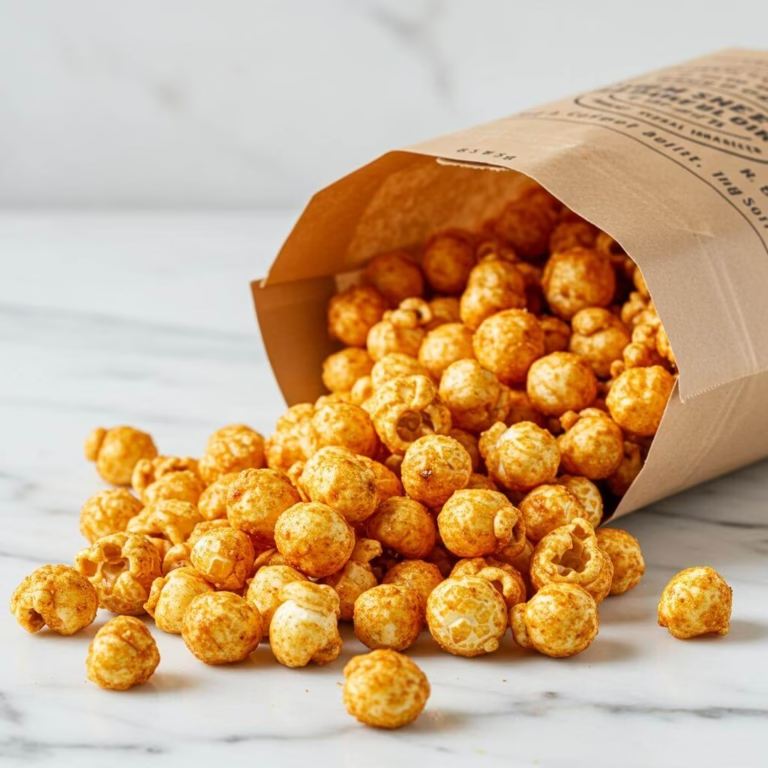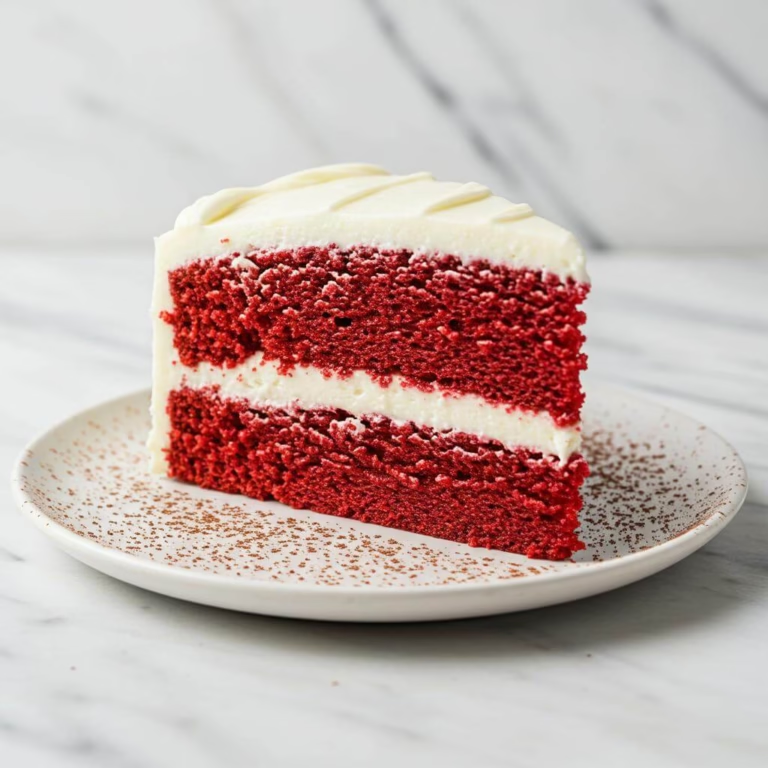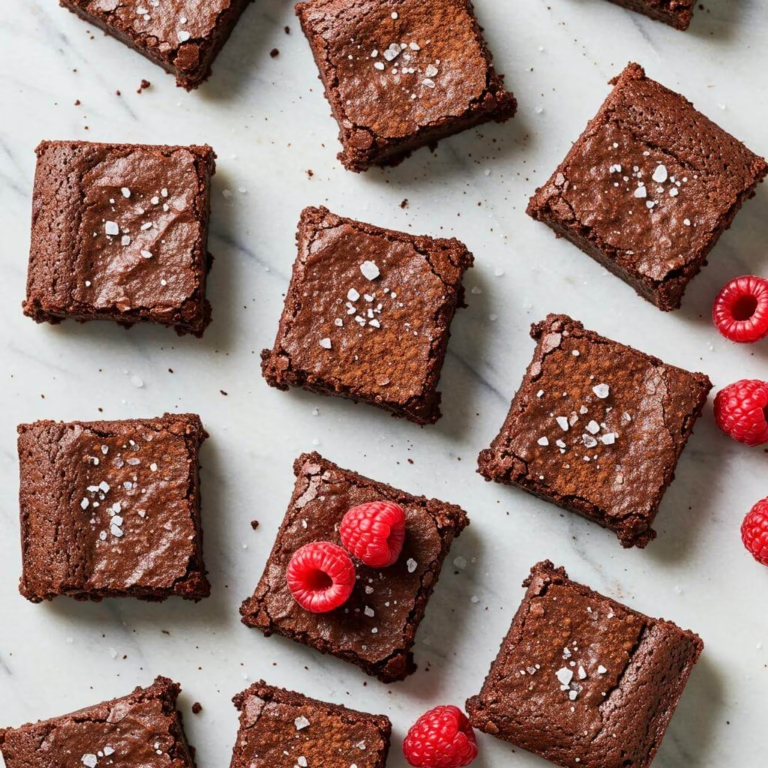Do you remember the simple joy of a truly magnificent slice of carrot cake? That classic, comforting blend of warm spices, sweet carrots, and that undeniable, tangy cream cheese frosting? For so many of us, going gluten-free meant saying goodbye to spontaneous slices at cafes or easily whipping one up from a box mix. The craving hits, deep and specific – only a perfect, moist gluten free carrot cake will do.
Oh, the journey we’ve been on, fellow gluten-free friends! The countless attempts, the hope dwindling with each flat, dry, or strangely gummy cake pulled from the oven. We’ve mixed batters that promised perfection, only to yield a crumbly mess that couldn’t hold frosting, or a dense, unyielding loaf that felt more like a brick. The slight sigh of disappointment as another test subject failed to meet that cherished memory of classic carrot cake. We’ve all been there, right? Trying different flour blends, adjusting moisture, experimenting with binders, chasing that elusive tender crumb that seems so easy for others.
But persistence, as they say, pays off! After many rounds of tweaking, tasting, and refusing to give up on my quest for the ultimate gluten free carrot cake, I had that “aha!” moment. It wasn’t just about replacing the flour; it was about understanding the unique way gluten-free ingredients behave, how moisture needs to be handled, and finding the perfect balance of spice and sweetness. When the aroma of cinnamon, ginger, and nutmeg finally filled my kitchen, followed by the sight of a beautifully risen, golden-brown cake, I knew I was close. And tasting that first forkful of moist, flavour-packed gluten free carrot cake topped with the lighter-than-air frosting? Pure bliss.
This isn’t just *a* gluten free carrot cake recipe; it’s THE gluten free carrot cake recipe that ended my search and has become a firm favourite with absolutely everyone who tries it – gluten-free or not! Friends and family have raved, unable to believe it’s actually gluten-free. It’s easy, it’s reliable, and it delivers on every promise of that classic comfort. Say goodbye to dense, dry cakes and hello to tender perfection. Your quest for the best gluten free carrot cake—one that’s just as good, if not better, than the original—ends right here. Get ready to bake up a winner that will satisfy every single craving. You might even want to pair a slice with a fudgy gluten free brownie or slice of moist gluten free banana bread, but let’s start with this spectacular gluten free carrot cake!
Loved This Gluten-Free Carrot Cake? Bake MORE Masterpieces!
Enjoying this incredible gluten free carrot cake is just the beginning! Don’t let tricky substitutions hold you back from exploring a world of delicious gluten-free baking.
Unlock the secrets with our FREE Gluten-Free Baking Substitutions Cheat Sheet!
- Instantly decode common baking substitutions for flours, binders, dairy, and sweeteners.
- Say goodbye to crumbly fails and hello to perfectly textured cakes, cookies, and breads.
- Confidently convert your cherished family recipes to be delightfully gluten-free.
- Save time and ingredients by getting it right the first time, every time!
We know the gluten-free journey can have its challenges, fellow gluten-free friends. This cheat sheet is designed to make your baking adventures smoother and much more delicious!
Get My FREE Baking Cheat Sheet!
We value your trust and promise to only send you genuinely helpful gluten-free tips, recipes, and resources. No spam, ever!
Why This Recipe Works (Gluten-Free)
Creating a truly exceptional gluten free carrot cake that rivals its traditional counterpart requires a bit of kitchen alchemy! The secret to this recipe’s success lies in understanding how gluten-free ingredients can work together brilliantly to replicate and even improve upon the texture and structure typically provided by gluten. Here’s the fascinating science happening in your kitchen:
First, the foundation: the careful balance of the gluten free flour blend and **xanthan gum**. Since gluten isn’t present to provide elasticity and structure, **xanthan gum** steps in as a binder. It forms a gel-like network when hydrated, holding the cake together and preventing that frustrating crumbliness often associated with gluten-free baking. When combined with the right blend of gluten-free flours (often a mix of starches and whole grain flours), they create a tender crumb that mimics wheat flour beautifully in this gluten free carrot cake.
What’s truly remarkable about this gluten free carrot cake recipe is its use of **oil** instead of butter. Oil is a liquid fat at room temperature, and it coats flour particles more effectively than solid fats like butter. This results in a cake that stays significantly more moist and tender, even when cold from the fridge (which is crucial when you have cream cheese frosting!). This oil-based structure is a brilliant win for gluten-free cakes, ensuring a soft bite every time.
Here’s where the magic of the rise happens: the combination of **baking powder** and **baking soda**. **Baking powder** provides a consistent lift, while **baking soda** needs an acid to activate its leavening power. In this recipe, the acidity comes from the **light brown sugar** thanks to its molasses content! This reaction creates carbon dioxide gas bubbles, helping the cake rise and creating a light, fluffy texture without relying on gluten to trap those bubbles.
The importance of using **coarsely grated carrots** cannot be overstated! While finely grated carrots can release too much water and make a cake heavy, **coarsely grated carrots** add essential moisture throughout the baking process while also providing wonderful pockets of tender texture. Combined with the optional crunch of **walnuts**, they provide a delightful contrast that makes every bite of this gluten free carrot cake interesting.
Finally, the revolutionary cream cheese frosting! By using **heavy/double cream** instead of butter, this frosting whips up incredibly light and fluffy. The high fat content of the cream helps stabilize the frosting with far less powdered sugar than typical butter-based versions, resulting in a luscious topping that’s not overly sweet – the perfect complement to the rich flavour of the **gluten free carrot cake** itself.
By leveraging the unique properties of these ingredients – the binding power of **xanthan gum**, the moisture from **oil**, the lift from the leaveners activated by **light brown sugar**, and the texture from **coarsely grated carrots** – this recipe achieves a perfectly moist, flavourful, and structurally sound gluten free carrot cake that truly proves gluten-free baking can be simple, reliable, and utterly delicious.

Making This Recipe Your Own
This amazing **gluten free carrot cake** is incredibly versatile! Don’t have exactly the right ingredient on hand, or want to try something completely different? Here are some ideas to help you make this recipe perfectly suit your pantry and your cravings while keeping it wonderfully gluten-free.
Easy Swaps
Don’t stress about having every single ingredient. These simple swaps will ensure your delicious **gluten free carrot cake** turns out beautifully every time!
- No Sunflower or Vegetable Oil? No Problem! You can confidently substitute any neutral-flavoured liquid oil like canola oil, grapeseed oil, or melted refined coconut oil (make sure it’s refined so it doesn’t add a coconut flavour). Use the same amount (120g or ½ cup + 1 tbsp). Using oil is key to this cake’s moist, tender texture, unlike a butter-based **gluten free carrot cake**.
- Swap the Sugar: While light brown soft sugar gives that classic caramel note and moisture, you can substitute it in a pinch. You can use dark brown sugar for a deeper molasses flavour (use the same amount, 225g or 1 cup + 2 tbsp), or use a mix of granulated sugar and brown sugar (use a total of 225g, aiming for at least half brown sugar for moisture). The texture might be slightly different with less brown sugar, but it will still be a delicious **gluten free carrot cake**.
- Pecans Instead of Walnuts: The recipe mentions this, and it’s a fantastic swap! Use roughly chopped pecans in the same amount (90g or ¾ cup) instead of walnuts. Both nuts provide a lovely crunch against the soft cake. Or, omit them entirely for a nut-free version – the cake will still be wonderfully moist and flavourful.
- Spice It Differently: The combination of cinnamon, ginger, and nutmeg is classic, but feel free to adjust or swap! A pre-mixed pumpkin pie spice blend can be used – start with 2-2.5 teaspoons total spice and adjust to your preference. A pinch of ground cloves or cardamom can also add extra warmth.
- Xanthan Gum Considerations: This recipe assumes your gluten free flour blend *doesn’t* contain xanthan gum and adds it separately. If your **gluten free flour blend** *already* includes xanthan gum or other binders (like guar gum), you should omit the ½ tsp of extra xanthan gum listed in the recipe. Adding too much can make your cake heavy or gummy. Always check your flour blend’s ingredients! For reliably good results, especially if your blend doesn’t have binders, adding quality xanthan gum like this is recommended for a perfect **gluten free carrot cake**.
Creative Variations
Get creative and put your own spin on this already fantastic **gluten free carrot cake**! Here are some ideas to inspire you.
- Add Citrus Zest: For a brighter flavour, add the finely grated zest of one orange or lemon to the wet ingredients along with the vanilla. Orange zest pairs particularly well with the carrot and spices in this **gluten free carrot cake**. You could even add a tiny bit to the cream cheese frosting!
- Mix In Other Goodies: Elevate the texture and flavour by folding in other dried fruits or coconut with the carrots and nuts. Try adding ½ cup of raisins, dried cranberries, or shredded unsweetened coconut.
- Make it Vegan/Dairy-Free: Adapting this **gluten free carrot cake** to be completely plant-based requires a few swaps: replace the eggs with a reliable egg replacer (like commercial egg replacer, flax eggs using flaxseed meal, or applesauce – note that results vary, an egg replacer designed for cakes is often best). For the frosting, use a dairy-free cream cheese alternative and a dairy-free whipping cream substitute (like chilled full-fat canned coconut milk, just the thick cream part) in the same quantities. This takes the cake from just gluten-free to a full **gluten free vegan carrot cake**!
- Change the Pan Shape: This batter works well in different pans, just adjust baking time!
- For **muffins**: Use a standard 12-cup muffin tin (like this one). Line the cups and fill them about two-thirds full. Bake at the same temperature (350ºF/180ºC) for 20-25 minutes, or until a toothpick comes out clean.
- For a **loaf cake**: Use a 9×5 inch loaf pan. Line it with parchment paper. Baking time will be longer, likely 50-60 minutes.
- For **layer cake**: Double the recipe and bake in two 8 or 9-inch round cake pans. Baking time will be similar to the square tin, maybe slightly less depending on pan size.
- Spiced or Orange Frosting: While the plain cream cheese frosting is divine, stir in an extra pinch of cinnamon, nutmeg, or ginger. You could also add ½ – 1 teaspoon of orange extract or 1-2 tablespoons of orange juice for an orange-flavoured cream cheese frosting to complement the carrot.
- Presentation Fun: Beyond just spreading the frosting, pipe it onto the cake using a piping bag and tip for beautiful swirls. For a rustic look, just use the back of a spoon to create swoops. Decorate with extra chopped nuts, candied carrot peel, or small marzipan carrots for a charming touch on your homemade **gluten free carrot cake**.
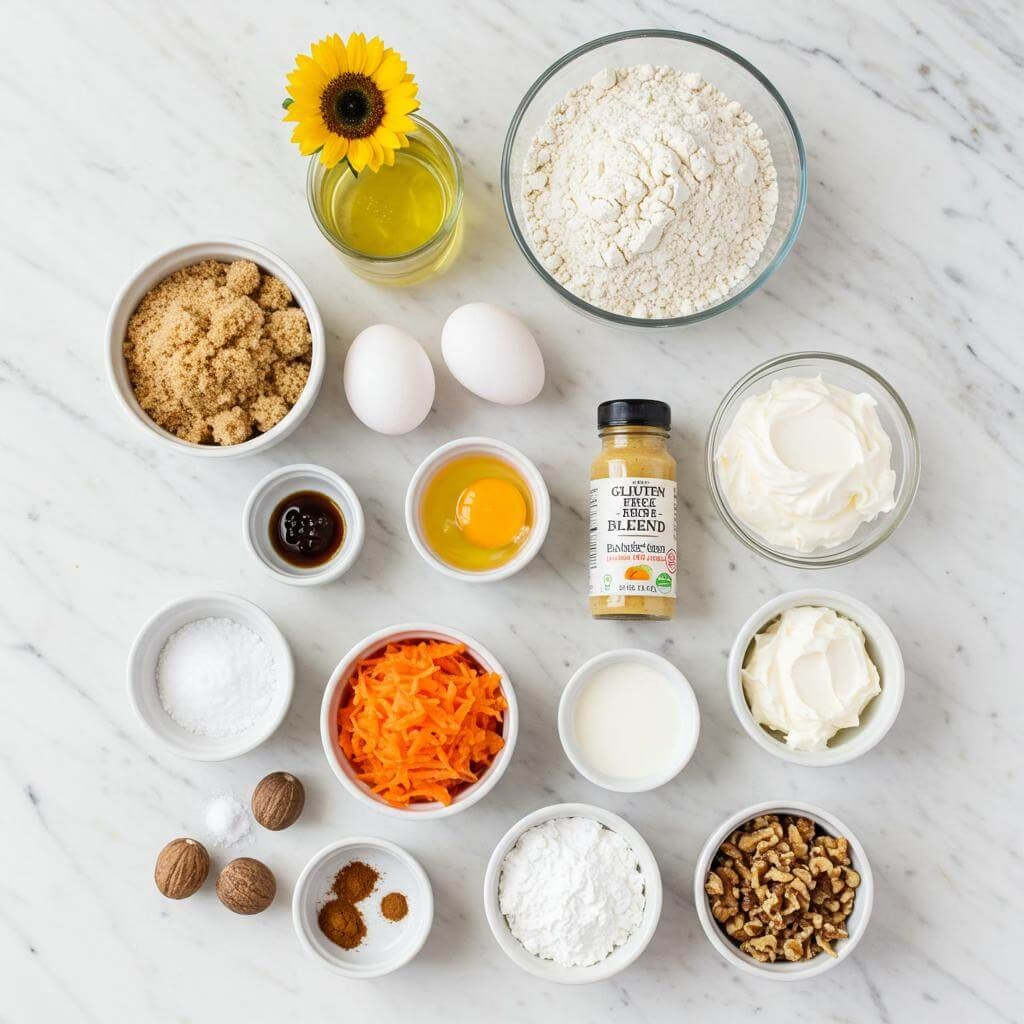
Tips for Perfect Results
- Master Weight Measurement, Especially for Gluten-Free Flour: This one tip will completely transform your results! While volume measurements (cups) are provided, using a kitchen scale to weigh your ingredients, particularly the gluten free flour blend and the carrots (as the recipe explicitly notes), is the single most accurate way to ensure consistent results every time you bake this gluten free carrot cake. Gluten-free blends vary wildly in how they pack into a cup, leading to significant differences in your batter’s hydration and final texture. Weighing eliminates this guesswork.
- Understand the Power of Coarsely Grated Carrots: The difference between a moist, tender crumb and a dense, wet cake often comes down to your carrot preparation. Always use coarsely grated carrots, not finely grated ones. Why? Coarser shreds cook down just enough to release moisture and flavour without turning mushy or releasing excessive liquid that can make the cake heavy and gummy. They also add lovely flecks of texture!
- Don’t Skip the Xanthan Gum (Unless Your Blend Already Has It): Xanthan gum isn’t just an optional extra in gluten-free baking; it’s a crucial binder that mimics the structure gluten provides. If your gluten-free flour blend doesn’t list a binder like xanthan gum or guar gum in its ingredients, you MUST add the specified amount. Omitting it when needed will result in a dry, crumbly cake that falls apart. Check your flour packaging!
- Embrace the Oil-Based Advantage: This recipe uses oil instead of butter, which is a secret weapon for moisture in gluten-free cakes. Oil stays liquid at room temperature (and even when chilled!), preventing the cake from drying out or becoming stiff like butter-based cakes can, especially when refrigerated. Use the specified vegetable or sunflower oil for optimal moisture and tenderness straight from the fridge.
- Chill Your Cream Cheese and Cream: For the best possible cream cheese frosting texture using the heavy cream method, ensure both your cream cheese and heavy/double cream are straight from the fridge and very cold. Cold fat molecules whip up more effectively, creating a stable, fluffy frosting. Lukewarm ingredients will result in a runny, unstable frosting that won’t hold its shape or spread properly.
- Whip Frosting to Soft Peaks, Not Stiff: When making the cream cheese frosting, stop whipping once soft peaks form and the frosting holds its shape when swirled. Over-whipping heavy cream can quickly lead to a curdled or overly stiff texture. You want a smooth, spreadable consistency, not something grainy or buttercream-like. It’s a delicate balance!
- Cool the Cake COMPLETELY Before Frosting: This is non-negotiable. Spreading cream cheese frosting onto a warm or even slightly warm cake will melt the frosting, turning it into a gooey mess that slides off the sides. Allow the gluten free carrot cake to cool fully on a wire rack until it reaches room temperature before you even think about grabbing your frosting spatula. Patience is key here!
- Use Parchment Paper Overhang: Lining your baking tin with parchment paper is essential for easy release, but taking it a step further by leaving a generous overhang on two opposite sides provides handles. This allows you to easily lift the cooled cake cleanly out of the tin before frosting, preventing sticking and potential breakage.
Common Mistakes to Avoid
- Using Finely Grated Carrots: As highlighted in the tips, finely grated carrots release too much moisture during baking, often leading to a cake that is too wet or dense rather than perfectly moist and tender. Prevention: Always use the coarse side of your box grater or a food processor with a grating attachment for consistently coarse shreds.
- Frosting a Warm Cake: This is a recipe disaster! Warm cake + chilled cream cheese frosting = melted, runny mess. Prevention: Wait until the cake is completely cooled to room temperature before attempting to frost it. Plan ahead and allow ample cooling time.
- Incorrectly Measuring Gluten-Free Flour: Scooping flour directly from the bag with a measuring cup can pack it down, resulting in significantly more flour than needed. This leads to a dry, heavy cake. Prevention: Always weigh your gluten-free flour blend using a kitchen scale for accuracy. If using cups, gently spoon the flour into the cup and level it off without packing.
Mastering these simple yet impactful techniques will ensure your next slice of this delicious gluten free carrot cake is absolutely perfect every single time!
Common Mistakes to Avoid
Using the Wrong Gluten-Free Flour Blend or Skipping Xanthan Gum
The Problem: One of the biggest challenges in gluten-free baking is achieving the right structure and texture. If you use a gluten-free flour blend that isn’t suitable for cakes or, crucially, if your blend doesn’t contain xanthan gum and you forget to add the amount specified, your gluten free carrot cake might end up crumbly, dry, or sink in the middle. Gluten normally provides elasticity and structure; without a suitable binder, results can be unpredictable.
Prevention: Always use a high-quality plain gluten-free flour blend designed for baking. Check the ingredient list on your flour blend package carefully. If it contains xanthan gum or other binders (like guar gum, psyllium), you can omit the extra amount listed in the recipe. If it doesn’t, make sure to add the exact amount of xanthan gum specified. Weighing your flour is also highly recommended for accuracy.
Pro Tip: Different blends absorb liquid differently. While this recipe is robust, using scales for flour and carrots (as recommended in the recipe notes) gives you the most consistent results every time you bake this delicious gluten free carrot cake. You got this!
Using Finely Grated Carrots
The Problem: The recipe specifically calls for coarsely grated carrots for a reason! Using finely grated carrots seems logical for even distribution, but they release significantly more moisture during baking. This can lead to a cake that’s too wet and dense in the centre, or even gummy, instead of the perfectly moist and tender texture you’re aiming for in your gluten free carrot cake.
Prevention: Use the large holes of a box grater or a food processor attachment to grate your carrots into nice, thick strands. Don’t use the fine side. Ensure you measure the grated carrots by weight (225g) for the most accurate amount, as volume measurements (like cups) can vary wildly depending on how tightly you pack them. Once grated, fold them gently into the batter as instructed, don’t overmix.
Pro Tip: If you accidentally grated your carrots too finely, you can try gently dabbing them with a paper towel to remove some excess moisture before adding them to the batter, but using coarsely grated carrots is the best route for success.
Not Letting the Cake Cool Completely Before Frosting
The Problem: This is a common mistake in all cake baking, but it’s particularly crucial when you’re dealing with a light, fluffy cream cheese frosting like the one in this gluten free carrot cake recipe. Spreading frosting onto a warm or even slightly warm cake will cause the frosting to melt, slide off, or create a sticky mess. You won’t get those beautiful swirls, and the texture will be ruined.
Prevention: Patience is key here! Follow the recipe’s instructions to let the cake cool in the tin for 10-15 minutes, then transfer it to a wire rack to cool completely. “Completely cool” means the cake should be at room temperature all the way through – no warmth radiating from the centre. This can take an hour or two depending on your kitchen temperature.
Recovery: If you’ve already put frosting on a warm cake and it’s melting, the best approach is usually damage control. Scrape off the melted frosting as best you can, pop the cake (without frosting) in the fridge for a bit to cool down fully, then make a fresh batch of frosting and apply it to the chilled cake. It’s extra work, but salvages the final result.
Incorrectly Preparing the Cream Cheese Frosting
The Problem: This recipe uses a lovely light frosting made with cream cheese and heavy cream, not butter. Getting the right consistency relies on using ingredients at the correct temperature and not over-whipping. Using warm cream cheese or cream, or over-whipping the mixture, can result in a runny frosting that won’t hold its shape or, conversely, a frosting that becomes too stiff, grainy, or even splits.
Prevention: Ensure both your cream cheese and heavy/double cream are cold straight from the fridge before you start. Whisk the cream cheese first until smooth and slightly looser. Then, add the cold cream, sugar, and vanilla and whisk until just soft peaks form. Stop whipping as soon as the frosting is thick enough to hold soft swirls – it should keep its shape but still be spreadable. Watch it carefully, as cream whips up quickly!
Pro Tip: If your frosting seems a little too thick after whipping, you can try adding a tiny splash (1-2 teaspoons) of cold milk or cream and stirring gently by hand to loosen it slightly. If it’s too loose but not over-whipped, try chilling it in the fridge for 15-30 minutes before attempting to spread it. You’ve got this!
Common Mistakes to Avoid
Using the Wrong Gluten-Free Flour Blend or Skipping Xanthan Gum
The Problem: One of the biggest challenges in gluten-free baking is achieving the right structure and texture. If you use a gluten-free flour blend that isn’t suitable for cakes or, crucially, if your blend doesn’t contain xanthan gum and you forget to add the amount specified, your gluten free carrot cake might end up crumbly, dry, or sink in the middle. Gluten normally provides elasticity and structure; without a suitable binder, results can be unpredictable.
Prevention: Always use a high-quality plain gluten-free flour blend designed for baking. Check the ingredient list on your flour blend package carefully. If it contains xanthan gum or other binders (like guar gum, psyllium), you can omit the extra amount listed in the recipe. If it doesn’t, make sure to add the exact amount of xanthan gum specified. Weighing your flour is also highly recommended for accuracy.
Pro Tip: Different blends absorb liquid differently. While this recipe is robust, using scales for flour and carrots (as recommended in the recipe notes) gives you the most consistent results every time you bake this delicious gluten free carrot cake. You got this!
Using Finely Grated Carrots
The Problem: The recipe specifically calls for coarsely grated carrots for a reason! Using finely grated carrots seems logical for even distribution, but they release significantly more moisture during baking. This can lead to a cake that’s too wet and dense in the centre, or even gummy, instead of the perfectly moist and tender texture you’re aiming for in your gluten free carrot cake.
Prevention: Use the large holes of a box grater or a food processor attachment to grate your carrots into nice, thick strands. Don’t use the fine side. Ensure you measure the grated carrots by weight (225g) for the most accurate amount, as volume measurements (like cups) can vary wildly depending on how tightly you pack them. Once grated, fold them gently into the batter as instructed, don’t overmix.
Pro Tip: If you accidentally grated your carrots too finely, you can try gently dabbing them with a paper towel to remove some excess moisture before adding them to the batter, but using coarsely grated carrots is the best route for success.
Not Letting the Cake Cool Completely Before Frosting
The Problem: This is a common mistake in all cake baking, but it’s particularly crucial when you’re dealing with a light, fluffy cream cheese frosting like the one in this gluten free carrot cake recipe. Spreading frosting onto a warm or even slightly warm cake will cause the frosting to melt, slide off, or create a sticky mess. You won’t get those beautiful swirls, and the texture will be ruined.
Prevention: Patience is key here! Follow the recipe’s instructions to let the cake cool in the tin for 10-15 minutes, then transfer it to a wire rack to cool completely. “Completely cool” means the cake should be at room temperature all the way through – no warmth radiating from the centre. This can take an hour or two depending on your kitchen temperature.
Recovery: If you’ve already put frosting on a warm cake and it’s melting, the best approach is usually damage control. Scrape off the melted frosting as best you can, pop the cake (without frosting) in the fridge for a bit to cool down fully, then make a fresh batch of frosting and apply it to the chilled cake. It’s extra work, but salvages the final result.
Incorrectly Preparing the Cream Cheese Frosting
The Problem: This recipe uses a lovely light frosting made with cream cheese and heavy cream, not butter. Getting the right consistency relies on using ingredients at the correct temperature and not over-whipping. Using warm cream cheese or cream, or over-whipping the mixture, can result in a runny frosting that won’t hold its shape or, conversely, a frosting that becomes too stiff, grainy, or even splits.
Prevention: Ensure both your cream cheese and heavy/double cream are cold straight from the fridge before you start. Whisk the cream cheese first until smooth and slightly looser. Then, add the cold cream, sugar, and vanilla and whisk until just soft peaks form. Stop whipping as soon as the frosting is thick enough to hold soft swirls – it should keep its shape but still be spreadable. Watch it carefully, as cream whips up quickly!
Pro Tip: If your frosting seems a little too thick after whipping, you can try adding a tiny splash (1-2 teaspoons) of cold milk or cream and stirring gently by hand to loosen it slightly. If it’s too loose but not over-whipped, try chilling it in the fridge for 15-30 minutes before attempting to spread it. You’ve got this!
Essential Equipment for This Recipe
To prepare this delicious recipe, you’ll need the following kitchen tools:
- Mixing Bowls – A set of good quality mixing bowls is essential for combining your wet and dry ingredients.
Find Mixing Bowls on Amazon - Measuring Cups and Spoons – Precise measurements are key to baking success!
Find Measuring Cups and Spoons on Amazon - Baking Sheets – For perfectly baked treats, you’ll need reliable baking sheets.
Find Baking Sheets on Amazon - Whisks – A whisk is great for getting air into mixtures, and combining ingredients.
Find Whisks on Amazon - Spatulas – Use a spatula to mix ingredients together!
Find Spatulas on Amazon - Food Processors – If the recipe require chop vegetables, a food processor is essential.
Find Food Processors on Amazon - Saucepans – Some recipies required a saucepan for heating.
Find Saucepans on Amazon - Chef’s Knives – A Knife is one of the most essential cooking utensil.
Find Chef’s Knives on Amazon - Cutting Boards – For cutting and chopping, a good cutting board is a must.
Find Cutting Boards on Amazon
Frequently Asked Questions
Which gluten-free flour blend works best for this easy gluten free carrot cake recipe?
Great question! The recipe was developed using a plain gluten-free flour blend that does NOT contain added xanthan gum (like Doves Farm Freee plain white). If your preferred blend already includes xanthan gum or another binder, simply omit the separate xanthan gum listed in the ingredients (½ tsp). Most good quality all-purpose gluten-free blends should work, but keep in mind that results can vary slightly between brands. For best results, always weigh your gluten-free flour instead of using cup measures, as this is much more accurate!
Why do I need to use coarsely grated carrots instead of finely grated ones?
This is a pro tip for a perfectly textured gluten free carrot cake! Using coarsely grated carrots (like from the large holes of a box grater) is key because they release moisture more slowly during baking. Finely grated carrots can sometimes release too much liquid too quickly, which can result in a cake that’s a bit too dense or overly moist in a gummy way. Coarse carrots add wonderful texture and keep the moisture just right!
Can I make this gluten free carrot cake without nuts? Or substitute the walnuts?
Absolutely! If you have a nut allergy or just prefer your cake without them, you can simply omit the walnuts altogether – the cake will still be incredibly delicious and moist. If you like nuts but don’t have walnuts, pecans are a fantastic substitute and work beautifully in carrot cake. Feel free to swap them 1:1!
My gluten-free cake batter seems a bit thicker than wheat batter – is that normal?
Yes, totally normal! Gluten-free batters often have a slightly different consistency compared to traditional wheat batters, sometimes appearing a bit thicker or even slightly lumpier before baking. Don’t worry! As long as you’ve followed the sifting and mixing steps and ensured there are no dry pockets of flour, your gluten free carrot cake batter is likely perfect and will bake up beautifully light and tender thanks to the leavening agents and oil.
What’s different about this cream cheese frosting, and can I use a traditional butter-based one?
Ah, the frosting is a highlight! Our cream cheese frosting uses heavy/double cream instead of butter. This brilliant swap makes the frosting incredibly light, fluffy, and not overly sweet, as it doesn’t rely on massive amounts of powdered sugar for stability. It’s also very easy to spread and holds its shape wonderfully. While technically you *could* use a traditional butter and cream cheese frosting, we highly recommend trying this version for its superior light texture that perfectly complements the moist easy gluten free carrot cake!
Do I *really* need to add the xanthan gum if my flour blend doesn’t have it?
For the best results with this specific gluten free carrot cake recipe, yes, adding the separate xanthan gum is important *if* your chosen gluten-free flour blend does not list it as an ingredient. Xanthan gum acts as a crucial binder in gluten-free baking, mimicking the structure that gluten provides. It’s what helps give your cake structure, prevents it from being too crumbly, and ensures you get lovely, sliceable pieces. Always double-check your flour blend’s ingredients!
How should I store this gluten free carrot cake, and how long does it keep?
Because of the cream cheese frosting, this gluten free carrot cake needs to be stored in the fridge. Simply place any leftovers in a well-sealed airtight container. It will keep wonderfully in the refrigerator for 3 to 4 days. One of the great things about this oil-based cake is that it stays beautifully soft even when chilled, so you can enjoy a slice straight from the fridge!
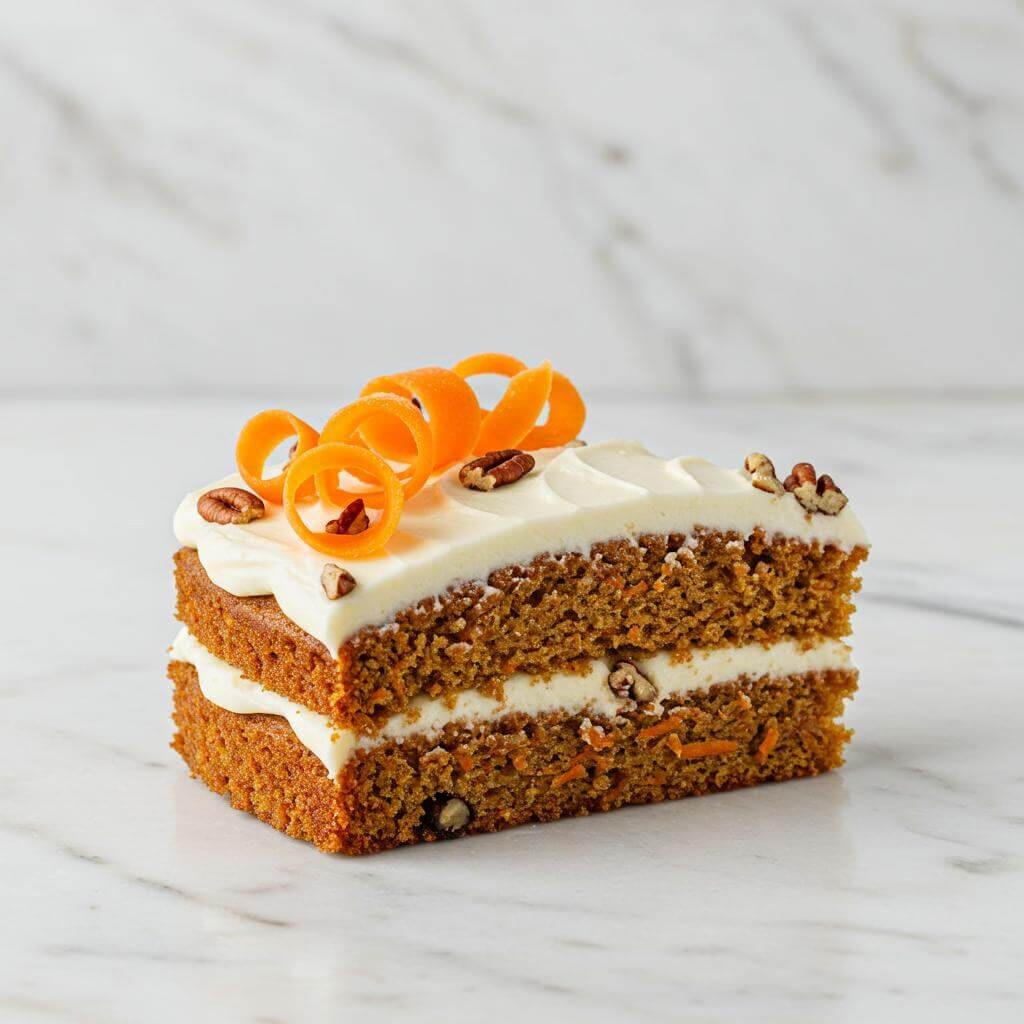
Gluten Free Carrot Cake: The *ULTIMATE* Easy Recipe!
Vegetarian
Gluten-Free
A truly magnificent, moist, and spiced gluten-free carrot cake with tangy cream cheese frosting.
20 MinsPrep
35 MinsCook
9-12 SlicesServings
EasyLevel
Nutrition per serving
Ingredients
For the Cake:
- 225 g (1 cup + 2 tbsp) light brown soft sugar
- 120 g (½ cup + 1 tbsp) sunflower or vegetable oil
- 3 US large/UK medium eggs, room temperature
- ½ tsp vanilla bean paste (or 1 tsp vanilla extract)
- 200 g (1⅔ cups) plain gluten free flour blend (use a blend without xanthan gum, or adjust amount of xanthan gum below)
- ¾ tsp baking powder
- ¾ tsp baking soda
- ½ tsp xanthan gum (omit if your flour blend already contains it)
- ¼ tsp salt
- 1½ tsp ground cinnamon
- ½ tsp ground ginger
- ¼ tsp ground nutmeg (freshly grated with a nutmeg grater recommended)
- 225 g (about 2¼ cups) peeled and coarsely grated carrots
- 90 g (about ¾ cup) walnuts, roughly chopped
For the Cream Cheese Frosting:
- 170 g (¾ cup) cream cheese, cold from the fridge
- 175 g (¾ cup) heavy/double cream, cold from the fridge
- 80 g (⅔ cup) powdered/icing sugar, sifted
- ½ tsp vanilla bean paste (or 1 tsp vanilla extract)
- Walnuts, roughly chopped, for decoration (optional)
Directions
Recipe Notes
- Storage: Leftover cake keeps wonderfully in a closed container in the fridge for 3-4 days.
- Coarsely Grate Carrots: Use coarsely grated carrots for the best texture. Finely grated carrots can make the cake too dense.
- Xanthan Gum: If your gluten-free flour blend already contains xanthan gum, omit the ½ tsp called for in the recipe.
- Cool Completely: Ensure the cake is completely cool on a wire rack before frosting to prevent the frosting from melting.
- Nut-Free Option: For a nut-free cake, simply omit the walnuts. Pecans can also be used as an alternative to walnuts.
- Oil Choice: While sunflower or vegetable oil is recommended, other mild-flavored oils like canola oil can be used.
Share This Recipe
About This Gluten Free Carrot Cake
Craving that classic, comforting slice of carrot cake but need it to be gluten-free? This Ultimate Gluten Free Carrot Cake recipe ends your search! We understand the journey of trial and error with gluten-free baking – the dense, dry, or gummy disappointments. This recipe, born from persistence and a deep understanding of gluten-free ingredients, delivers a perfectly moist, warmly spiced carrot cake every time, satisfying that deep, specific craving for a truly magnificent dessert.
This isn’t just another gluten free carrot cake; it’s THE easy, reliable, and crowd-pleasing recipe that will have everyone, gluten-free or not, raving. Experience the joy of a beautifully risen, golden-brown cake with a tender crumb and the most divine, light cream cheese frosting. Say goodbye to compromise and hello to gluten-free perfection. Get ready to bake a winner that’s just as good, if not better, than the original classic!

